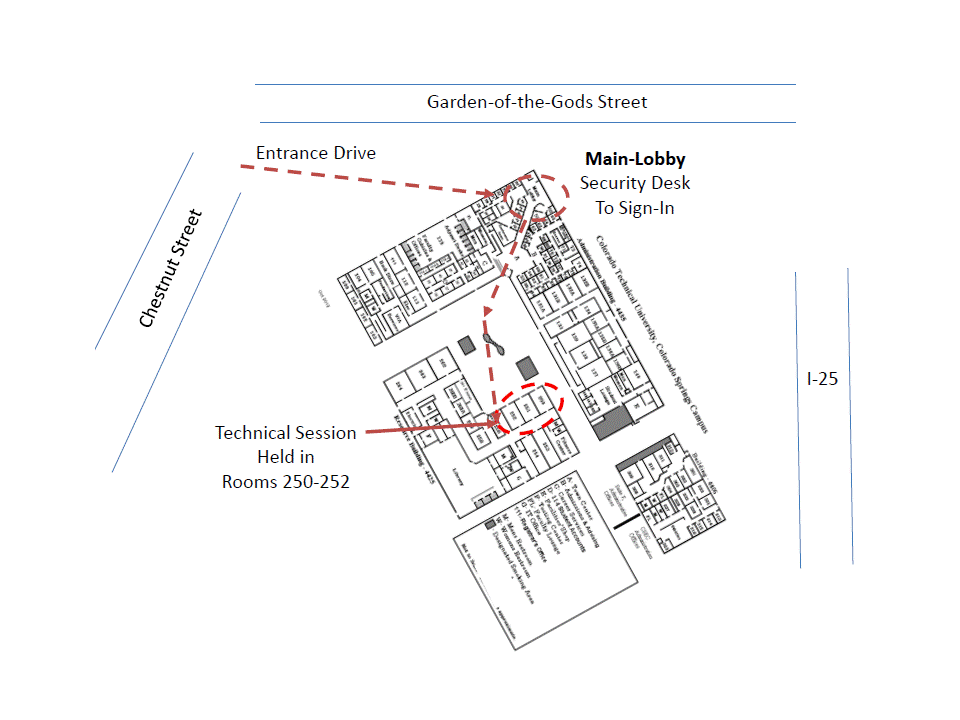Full-Scale Mockups, and the Recording of the Events that Simulate a Nuclear Implosion/Detonation
 Presentation Abstract: The IEEE Pikes Peak Section invites you to attend a presentation on the full-scale material mockups, and recording of physical events that simulate a nuclear implosion/detonation. This effort leads to the refinements of computer programs that simulate the actual event. The presenter is Dr. Chris Rose, a research staff member at Los Alamos National Laboratory. And no – we are not going show you how to build or detonate a nuclear bomb.
Presentation Abstract: The IEEE Pikes Peak Section invites you to attend a presentation on the full-scale material mockups, and recording of physical events that simulate a nuclear implosion/detonation. This effort leads to the refinements of computer programs that simulate the actual event. The presenter is Dr. Chris Rose, a research staff member at Los Alamos National Laboratory. And no – we are not going show you how to build or detonate a nuclear bomb.
The presentation will focus on the Dual-Axis Radiographic Hydrodynamic Test Facility (DARHT) which is part of the Department of Energy's stockpile stewardship program at Los Alamos National Laboratory. The facility uses two large X-ray sources driven by two linear induction accelerators (LIAs) to record three-dimensional interior images of materials. In most experiments, materials undergo hydrodynamic shock to simulate the implosion process in nuclear bombs and/or the effects of severe hydrodynamic stress. The tests are described as "full-scale mockups of the events that trigger the nuclear detonation". The powerful pulsed X-ray beams allow for an ultra-fast motion picture to be constructed showing the details of the process being studied in three dimensions. The tests are often compared with computer simulations to help improve the accuracy of the computer code. Such testing falls under the category of sub-critical testing. Dr. Rose will give an overview of the DARHT facility, and discuss the operation of the two accelerators including pulsed power systems.
Date and Time
Location
Hosts
Registration
- Date: 28 Sep 2013
- Time: 12:00 AM UTC to 01:30 AM UTC
-
 Add Event to Calendar
Add Event to Calendar
- Colorado Technical University
- 4405 N. Chestnut Street
- Colorado Springs, New Hampshire
- United States
- Building: Building 1
- Contact Event Host
- If you have any questions please email or phone Russ Bogardus at russbogardus@comcast.net (719.337.6328)
- Co-sponsored by Pikes Peak Power and Energy Society
Speakers
Dr. Chris Rose
Biography:
Dr. Chris R. Rose received his Ph.D. in electrical engineering from Colorado State University. He holds BSEE and MSEE degrees from Brigham Young University, and an MBA from the University of New Mexico’s Anderson Graduate School of Management. In 1985, he began his career at the Boeing Aerospace Company in Seattle, Washington researching and developing various microwave, rf, instrumentation, diagnostics and pulsed-power machines for space and ground-based free electron lasers. In 1990, he joined Los Alamos National Laboratory working in the high-power rf and pulsed-power fields. Since that time, he has worked in other research areas including particle-beam diagnostics, pulsed-power machines, neutron scattering, magnetic-bearing systems, superconducting energy transport and storage, and now more recently, pulsed-power and beam physics at the Dual-Axis Radiographic Hydrodynamic Test (DARHT) facility. At DARHT, he is researching methods to reduce beam energy spread on the axis-II long-pulse linear-induction electron accelerator and other technical improvements to enhance its performance and reliability.
He holds one patent for a real-time frequency and phase control device, and has two patents pending. At Los Alamos, Dr. Rose has earned two Distinguished Performance Awards, and serves as an expert reviewer for the IEEE Trans. on Geoscience and Remote Sensing journal, and the American Meteorological Society’s Journal of Atmospheric Science and Technology. In 2005, he received an AMS best paper award for his work in Ku and Ka-band dual-frequency algorithms used in radar rain detection. He is active in promoting systems engineering, energy research, innovative pulsed power, and electromagnetics. He was part of a small team that won R&D 100 awards in 2009 and 2010 and serves as a part-time instructor at the UNM-Los Alamos campus teaching electrical engineering courses. He has published over 90 journal papers, conference and technical note.
Dr. Chris Rose
Biography:
